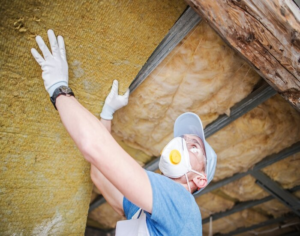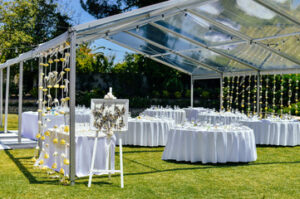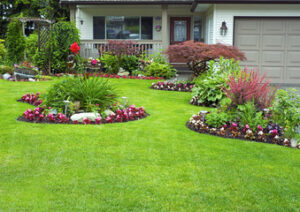Many homeowners choose to update their windows as a way to enhance their home’s aesthetic without major construction work. This can help increase resale value and reduce energy costs.

Pocket Replacement Windows fit into existing window frames and are less expensive than new-construction windows. However, both require regular maintenance to prevent water leaks and air infiltration.
When your windows start to show signs of wear and tear, it’s time to replace them. Not only will your home look more modern, but it will also be more energy efficient and safer. Older windows allow air to leak in and out of the house, making it harder to maintain a comfortable temperature throughout your living space. Replacement windows are designed to keep your home insulated, so you won’t have to pay as much to heat and cool it.
One of the most significant benefits of replacement windows is that they reduce drafts and help prevent energy loss, which in turn leads to lower utility bills. Additionally, new replacement windows are designed to minimize the number of UV rays that enter your home, which can lead to faded furniture and carpeting. This is particularly important for those who live in sunny areas or have children and pets that spend a lot of time outdoors.
Another benefit of replacing your existing windows is that they can boost the value of your home. According to a study by the National Association of Realtors, homeowners who install energy-efficient windows can usually recoup around 80% of the costs when they sell their homes. This is because potential buyers will be looking for a home that is comfortable, energy efficient and safe to live in.
In addition to lowering your energy costs, replacement windows can also reduce outside noise. This is because double- and triple-pane glass and insulated frames effectively block out noise from traffic, nearby businesses, lawnmowers and other noisy activities. This can make your home a quieter and more relaxing place to live.
It’s important to note that while new replacement windows can help you save on your energy costs, they also require a significant amount of energy to produce. This is known as embodied energy and is an important factor to consider when calculating your window’s energy payback. For this reason, it’s a good idea to stagger your replacement window installation over several years to minimize the impact on your energy consumption.
Security
Homeowners tend to focus more on aesthetics and energy efficiency when choosing replacement windows, but they shouldn’t overlook the role that these windows play in their home security. The fact is that your windows are entry points into your house and can be susceptible to unauthorized entry from burglars and other intruders. So, if you’re looking to keep your family and belongings safe from unwanted intruders, you need windows with enhanced safety features.
One of the most important safety features that you can add to your replacement windows is a robust locking mechanism. This feature will significantly increase your home’s security by preventing unauthorized entry. The best option for this is a multi-point lock that engages at several points along the window frame, which makes it more difficult to break in.
Another great option for enhancing the security of your replacement windows is impact-resistant glass. This specialized glass is designed to resist significant force and can even withstand severe weather conditions, making it much harder for intruders to break into your home. This specialized glass also breaks into small, less dangerous shards, which can prevent injuries if someone were to break the window with a hammer or other tool.
Lastly, you should opt for replacement windows that have a reinforced frame. These frames are made from materials like aluminum or steel and are stronger than their wooden counterparts, making them more resistant to unauthorized entry attempts. They are also able to withstand dents and rot, and they can provide an added layer of protection against extreme weather conditions.
Not only are faulty windows an inviting invitation for intruders, but they can also contribute to high power bills. When your windows do not open or close properly, they create a draft that draws in more heat during the winter and leads to higher energy bills. By choosing windows with the right safety features, you can keep your loved ones and possessions safe while saving on costly energy bills.
Durability
Windows are responsible for up to 8.6% of a home’s energy consumption, so the more they last, the lower your utility bills will be. That’s why it is important to choose a window that will withstand the elements and look good for years to come. The durability of a window is also an indicator of its quality. The best replacement windows will be built to last with the highest quality materials and be backed by a strong warranty.
The most common reason homeowners replace their windows is to improve energy efficiency. If you have noticed drafts or a significant increase in your energy bills, it may be time to upgrade your windows. Other signs that your windows need replacing include visible damage, broken glass or frames, and rot or mold around the frame.
There are two types of replacement windows: full frame and pocket replacements. A full frame replacement will require the removal of the old sash and frame, while pocket replacements will fit into the existing opening and leave the original frame in place. If you are looking for the longest lasting windows, go with a full-frame replacement.
Which type of glass to select is another factor that will affect the longevity of your replacement windows. Annealed glass is a common choice, but it doesn’t offer the best insulation or resistance to heat transfer. It’s also not as durable as tempered glass, which will break into small pebbles rather than sharp shards. If your budget allows, choose tempered glass for the best durability and energy efficiency.
Other factors that contribute to the durability of your replacement windows include the material, design and installation. Vinyl and fiberglass windows are highly durable and will last for 20 to 40 years or more, depending on the climate. Wood windows are another option that provide a classic aesthetic, but they can require more upkeep to protect against moisture and pests.
Regular maintenance is a great way to help your replacement windows last longer. Clean your windows with non-abrasive cleaners to avoid scratching the surface, and inspect them regularly for signs of water or air leaks. Inspect the seals and caulking for cracks or gaps and reseal as needed to maintain energy efficiency. Lubricate moving parts to prevent rust and ensure smooth operation.
Appearance
Window replacement is an opportunity to upgrade the look of your home. You can choose from a variety of frame materials, colors, sizes and configurations to create the design you want for your home. You also have the option of changing the trim around the windows to give them a more attractive appearance. If you are looking to boost your home’s resale value, replacement windows are an excellent choice because they are more affordable and easier to install than new construction windows.
Adding replacement windows to your home can enhance the resale value and improve its curb appeal. It is important to pick windows that are in good condition and are not drafty or hard to clean. You should also consider the energy efficiency of the windows and the installation process. It is recommended to go with full-frame replacement windows rather than casement windows because they have a better insulating value. You should also consider using windows with a U-Factor rating, which indicates how well the window prevents heat loss.
Some people replace their windows because they are outdated or damaged. The windows may have a cracked or warped frame or the glass is discolored or cloudy. They may also be difficult to open or close.
The most common types of replacement windows include vinyl, fiberglass, aluminum-clad and wood. Each has its own unique characteristics in terms of performance, energy efficiency and look. When choosing a replacement window, make sure to discuss your goals and preferences with the dealer, so they can help you select the perfect window for your home.
Many homeowners choose replacement windows because they are more convenient and low maintenance than older windows. They offer features like tilt-to-clean and lift out windows, which make cleaning the inside and outside of the windows easier. They also have features like multi-point locking systems, which increase security and help reduce unwanted entry into your home. Other convenient features include argon gas between the panes, which increases energy efficiency and lowers noise transfer. There are also a number of customizable options, such as optional locks, window grills and more.








